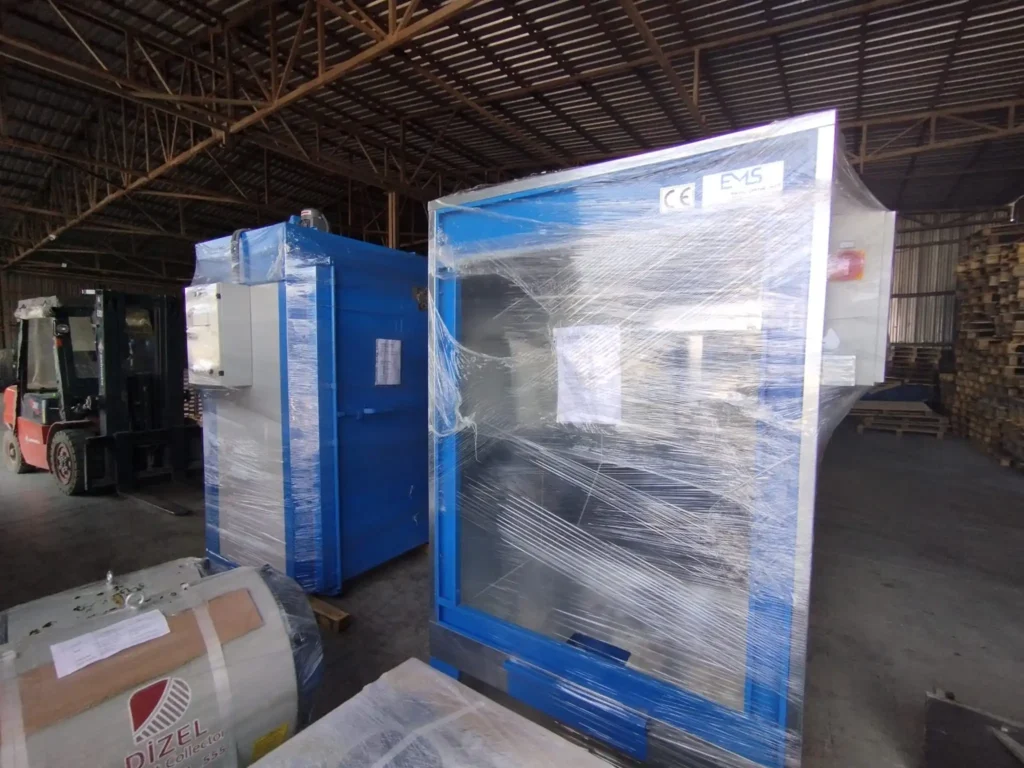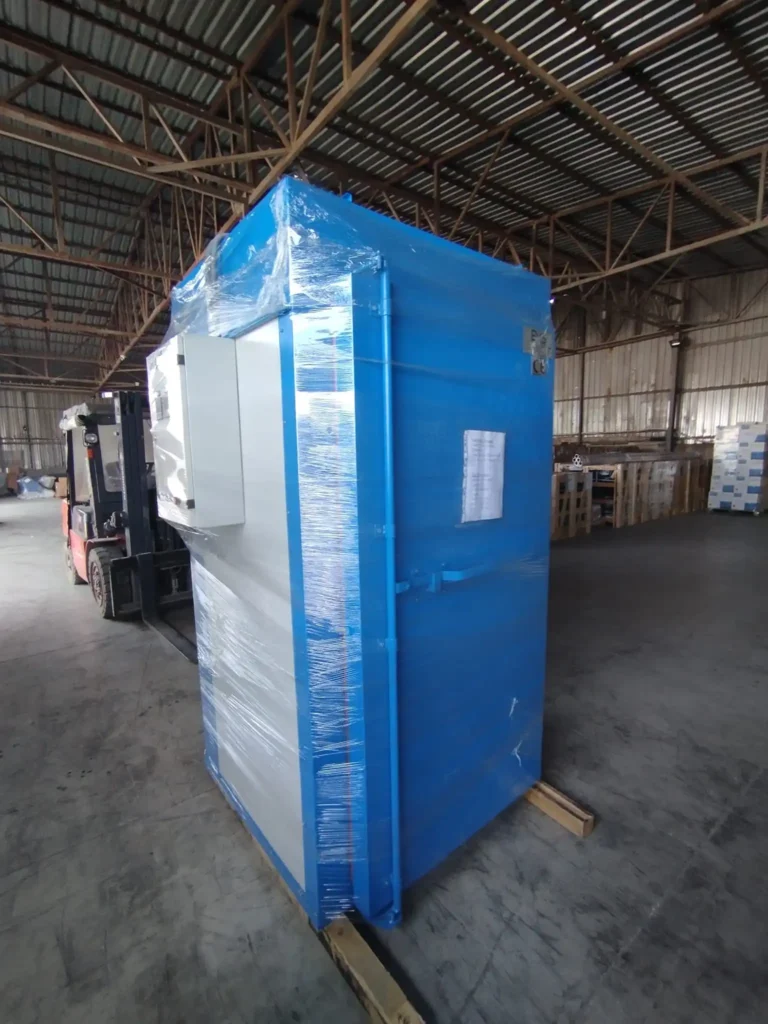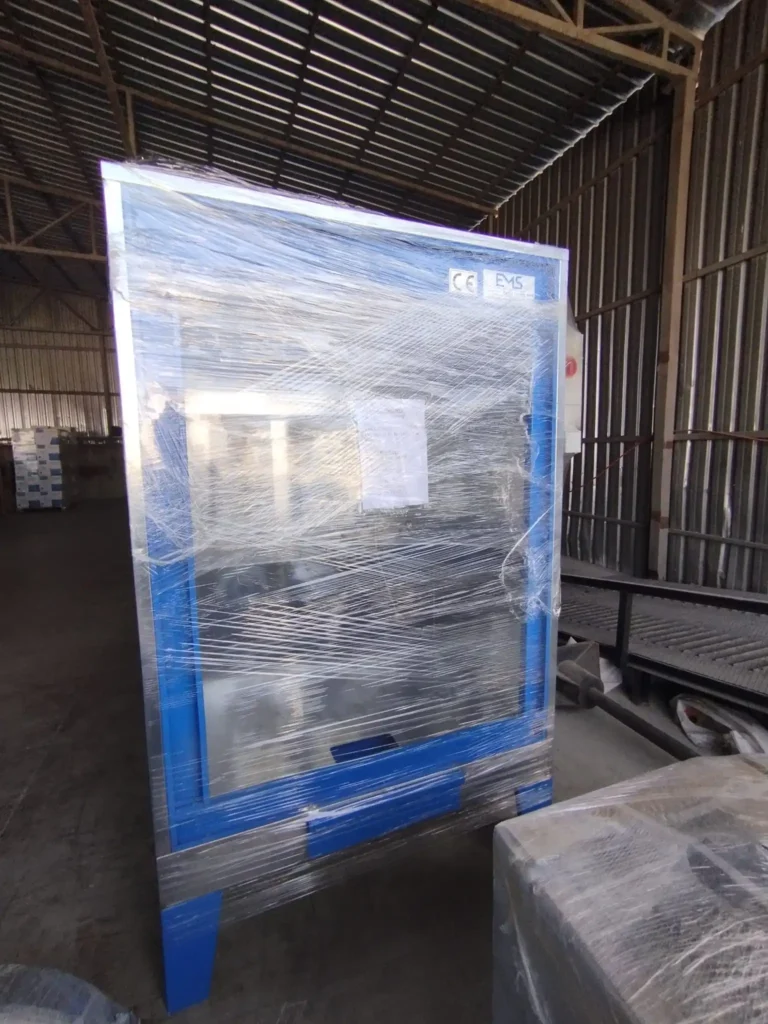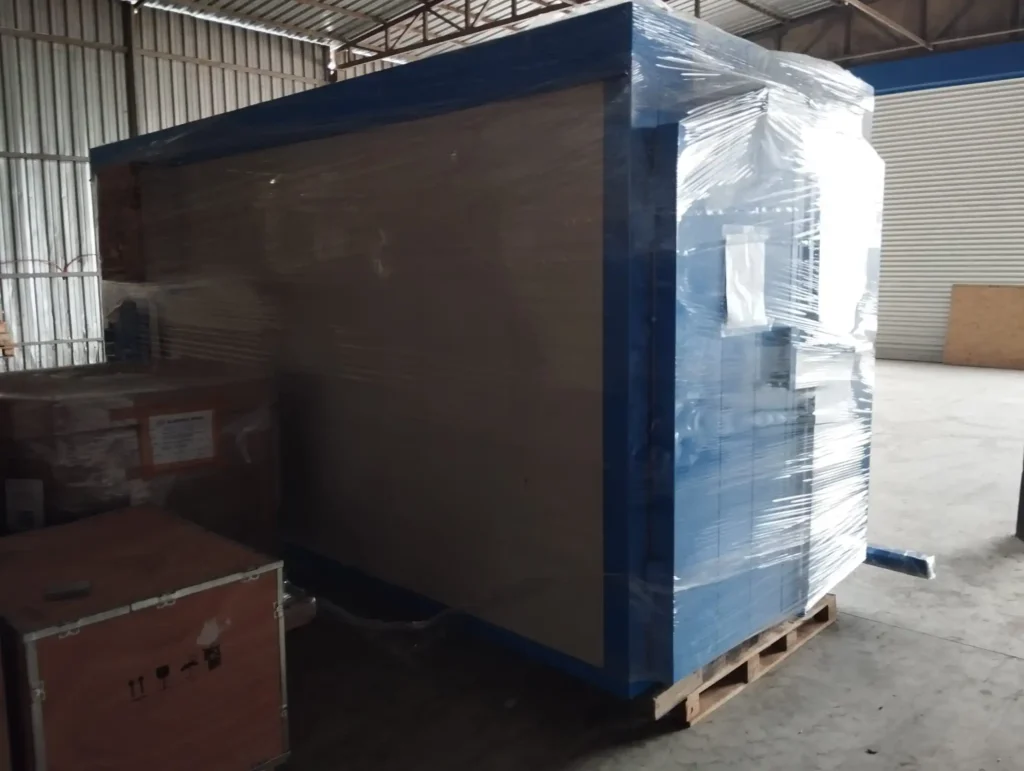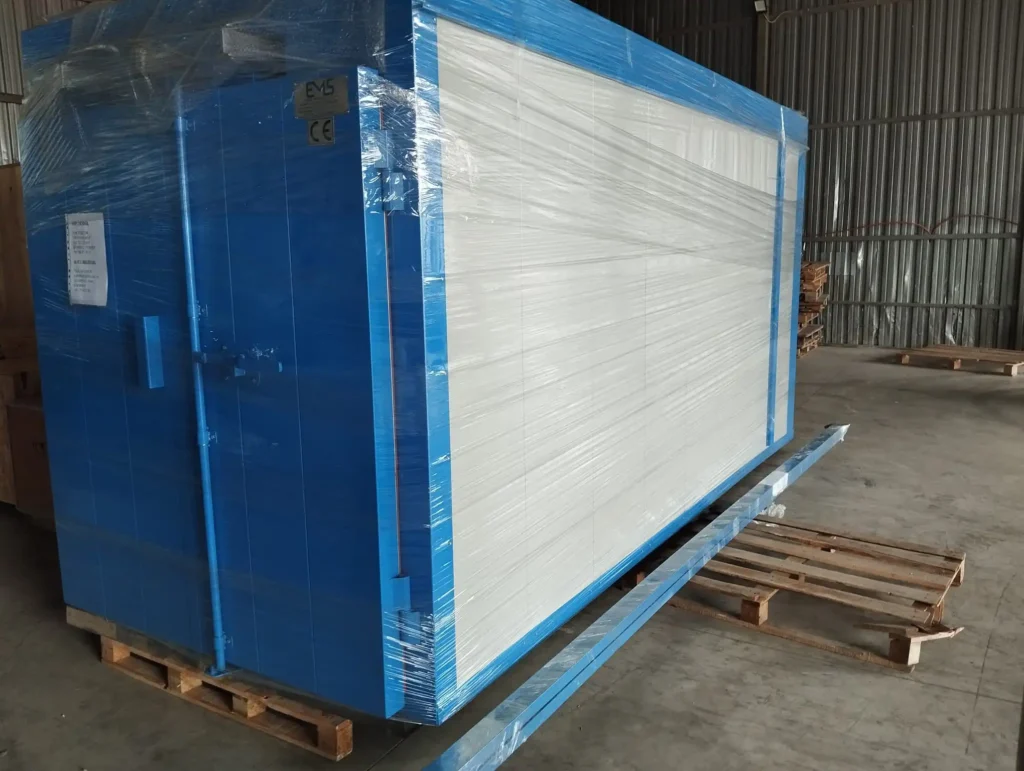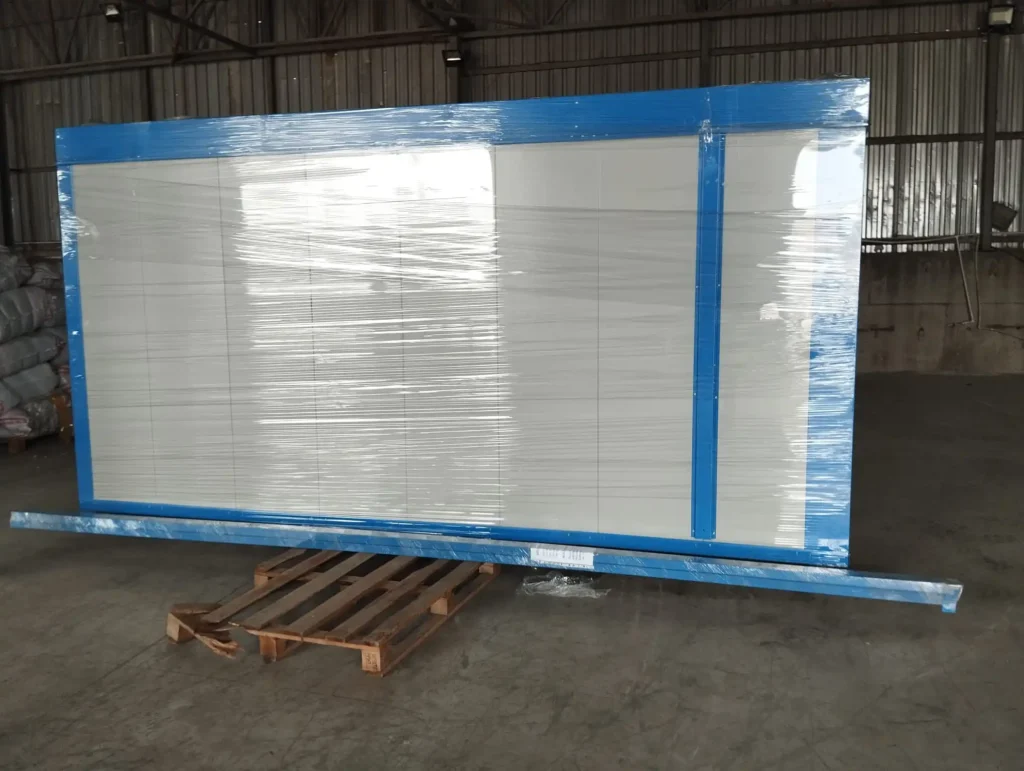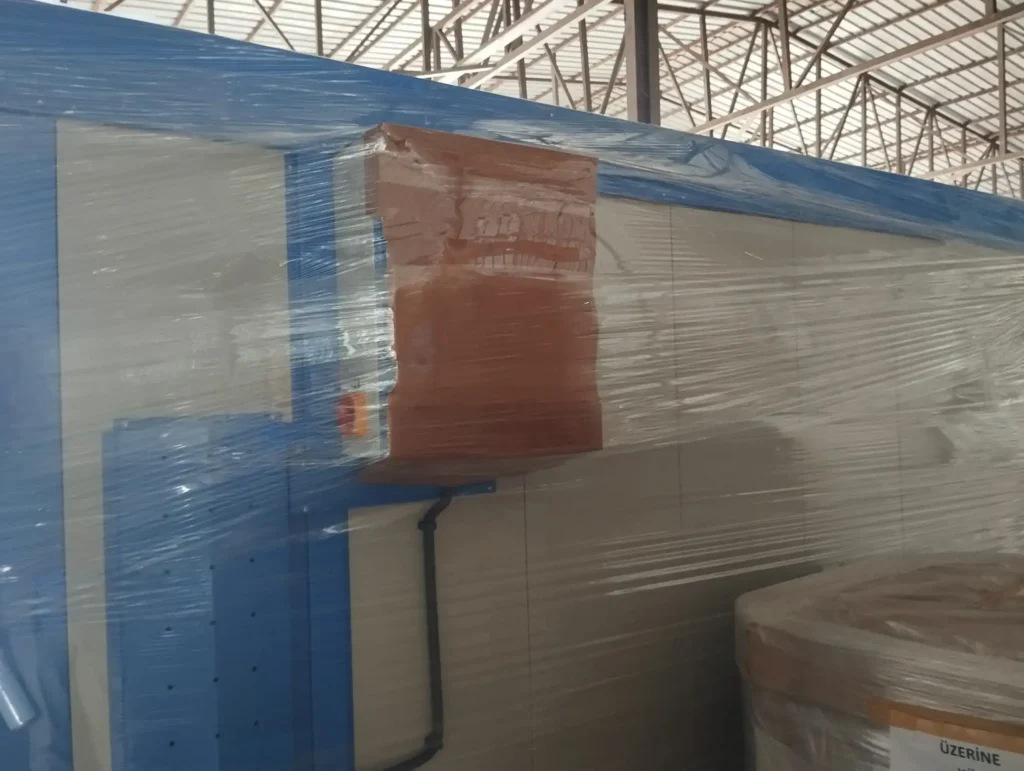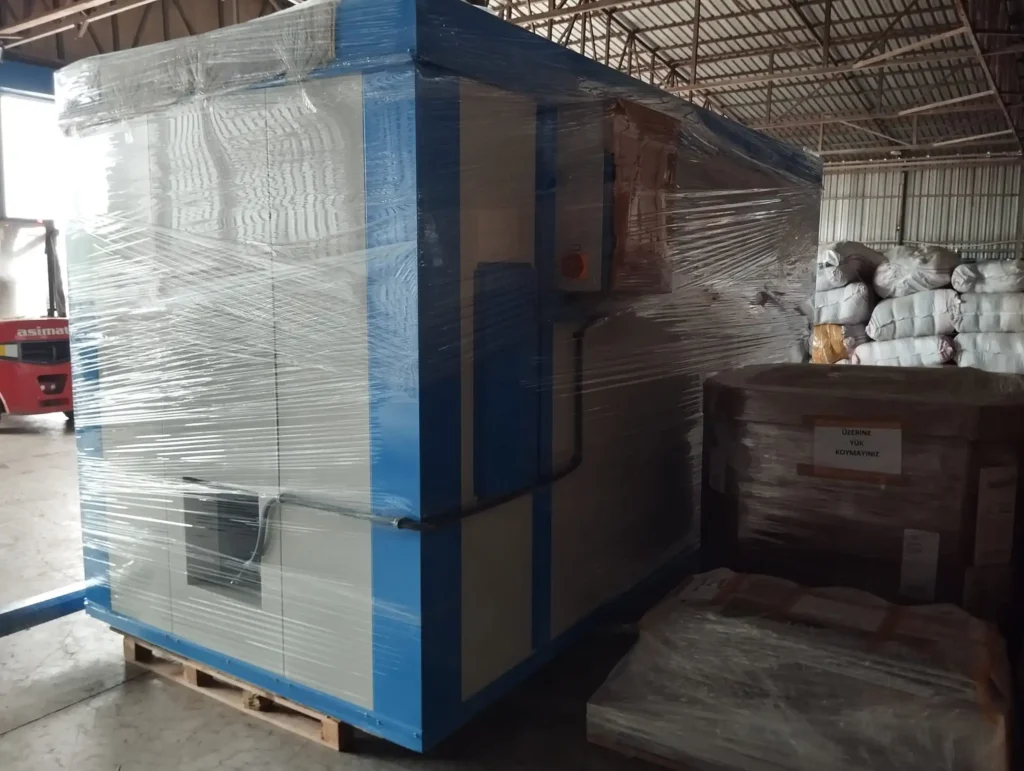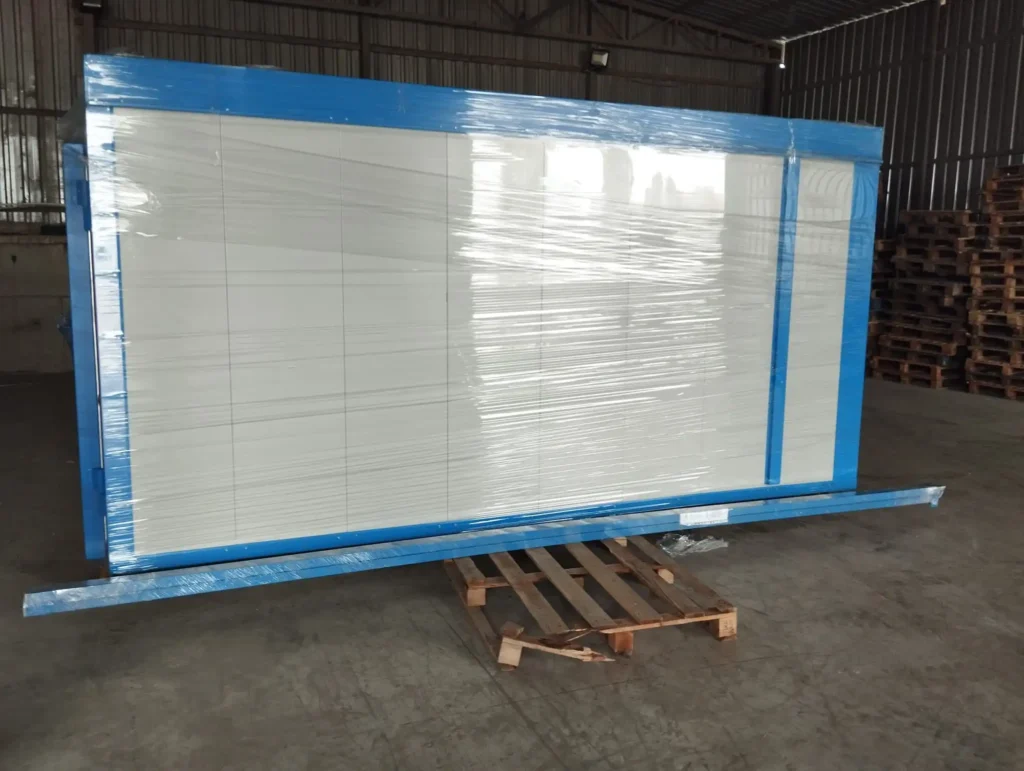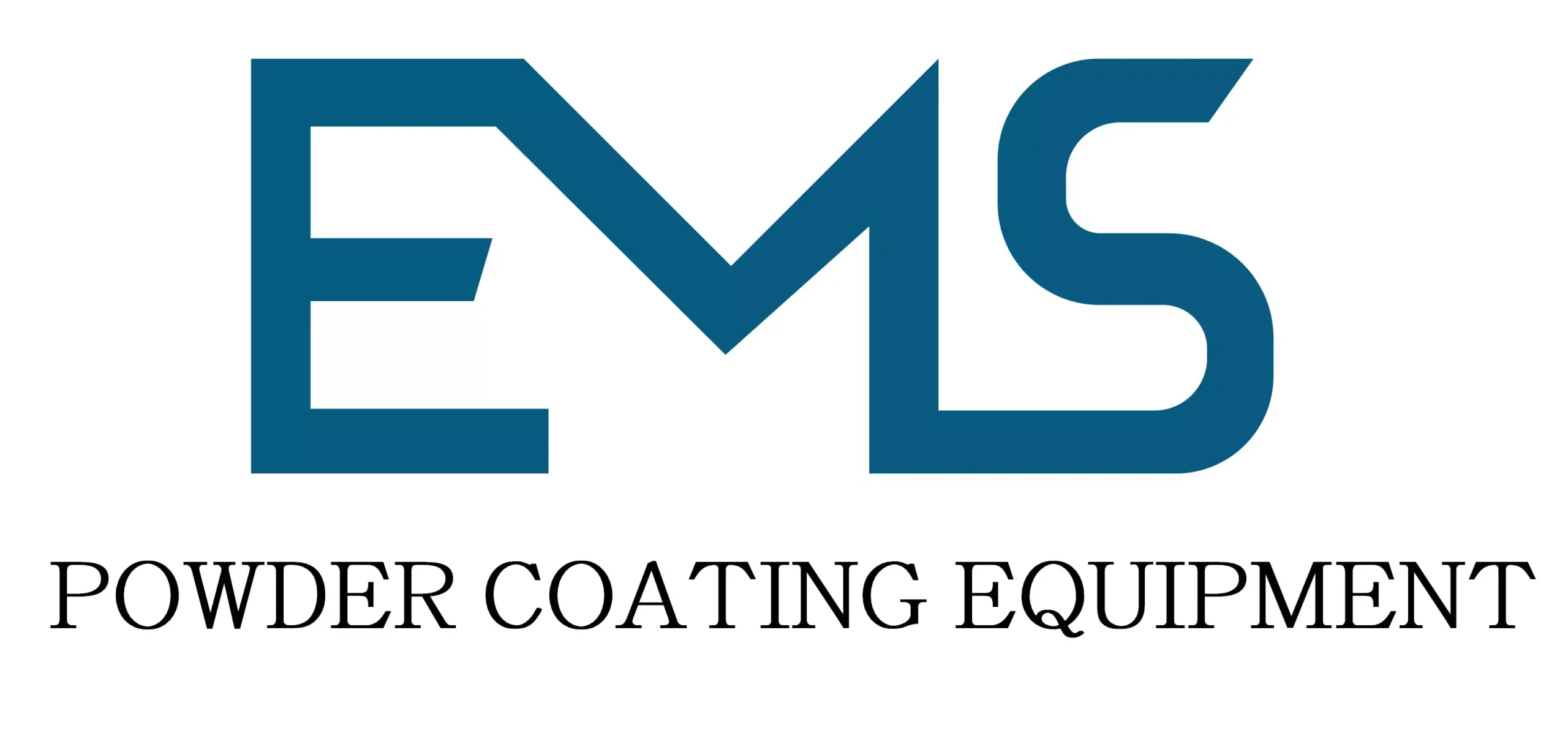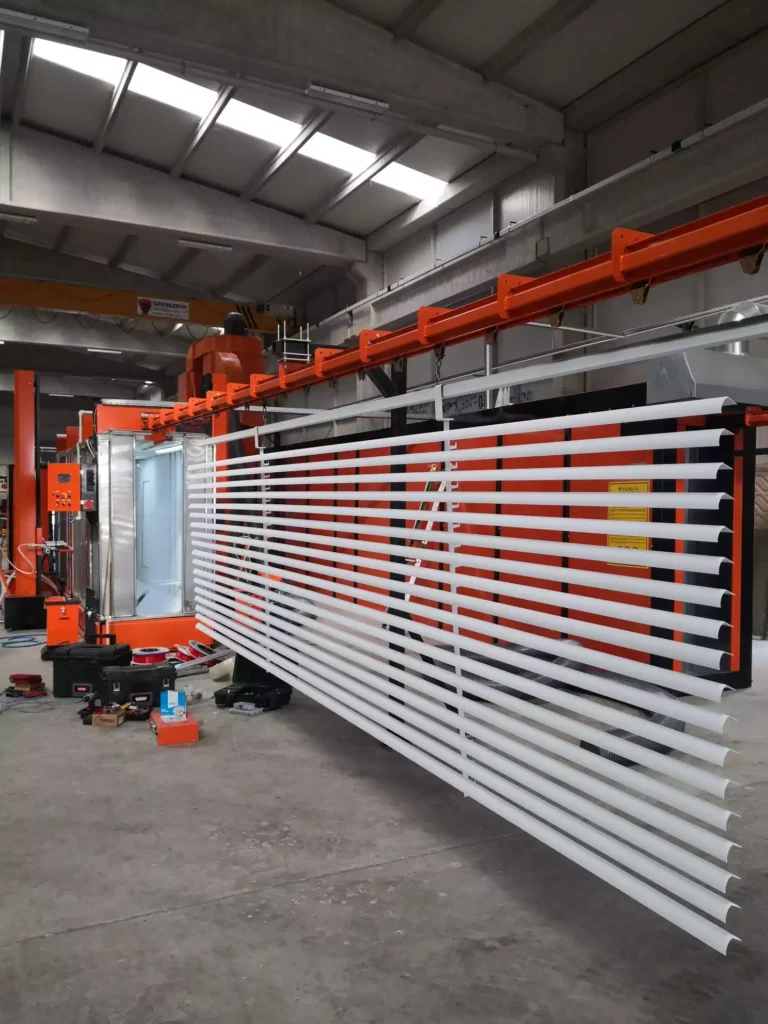
Aluminum Finishing Plants: Aluminum finishing plants play a critical role in the production and refinement of aluminum products, including those used in automotive, aerospace, packaging, and construction industries. These plants employ a series of processes designed to improve the surface quality of aluminum materials, impart protective coatings, and enhance the aesthetic appeal of finished products. The finishing processes generally involve various stages, such as cleaning, anodizing, painting, coating, and polishing, which collectively contribute to the durability, corrosion resistance, and overall appearance of the aluminum.
The cleaning process is typically the first step in the aluminum finishing process, where the raw aluminum is stripped of any surface impurities such as oils, dirt, and oxides. This is often done using chemicals or mechanical methods like abrasive blasting. Once cleaned, the aluminum undergoes further surface treatment depending on the desired finish. Anodizing is one of the most common methods used to enhance aluminum’s surface, where an electrolytic process creates a thick oxide layer on the metal. This not only improves the metal’s resistance to corrosion but also provides a base for dyes and paints, which can add color and further protect the surface. Anodized aluminum is widely used in applications that require both aesthetic appeal and high resistance to wear and environmental elements, such as in architectural facades and consumer electronics.
In addition to anodizing, painting is another key technique in aluminum finishing. Powder coating, a process where dry powder is applied electrostatically and then cured under heat, is commonly used to create a durable, even finish. This method is particularly favored for its environmental benefits, as it avoids the need for solvents and is less hazardous compared to traditional wet coatings. Powder coating is commonly applied in industries like construction, where aluminum products must endure exposure to harsh weather conditions while maintaining an attractive appearance.
A further layer of surface protection can be applied using a variety of specialized coatings. For example, chemical treatments, such as chromate conversion coatings, can enhance aluminum’s resistance to corrosion and improve its paint adhesion properties. These coatings are typically employed in aerospace and military applications where high performance and longevity are essential.
Aluminum finishing plants also use processes like polishing to achieve high-gloss finishes. Polishing aluminum creates a reflective surface that is often used for decorative purposes in products like automotive trim, cookware, and jewelry. To achieve such a finish, the aluminum is mechanically polished or treated with chemicals that create a mirror-like surface. This finishing process requires precision, as it must be carefully controlled to avoid surface imperfections.
The role of aluminum finishing plants is not limited to surface aesthetics and protection. These facilities also play a significant role in improving the functionality of aluminum products. For instance, some finishing processes may impart heat resistance, electrical conductivity, or non-stick properties, depending on the intended application of the aluminum. For example, in the production of aluminum cookware, finishes are often designed to provide non-stick surfaces that are easy to clean and maintain.
Environmental concerns also influence the operations of aluminum finishing plants. Many modern plants focus on sustainability, using methods that minimize waste, reduce energy consumption, and lower emissions. Water used in cleaning and anodizing processes is often treated and recycled to reduce consumption, while newer technologies are designed to minimize the release of toxic fumes and pollutants during coating and curing processes. The increased use of water-based and powder coatings is also driven by environmental considerations, as these options are more eco-friendly compared to traditional solvent-based paints.
Safety is another important aspect of aluminum finishing plants. The chemicals used in the anodizing and coating processes can be hazardous, requiring strict safety protocols to protect workers from exposure. Adequate ventilation, protective clothing, and safety training are crucial to ensure that employees are safeguarded from the risks associated with working in these environments.
Overall, aluminum finishing plants are an essential part of the global manufacturing supply chain, transforming raw aluminum into a wide range of high-performance products. The combination of advanced technologies and skilled labor ensures that aluminum finishes meet the demanding standards of industries ranging from aerospace to consumer goods. With increasing emphasis on sustainability and safety, these plants continue to evolve, adopting new techniques and processes to improve the quality and environmental footprint of aluminum finishing.
Aluminum Finishing Plants
The evolution of aluminum finishing plants is driven by both technological advancements and shifts in market demands. As industries seek higher performance and more sustainable materials, the need for more sophisticated finishing methods becomes paramount. Innovations in automation and robotics are increasingly being integrated into finishing processes to improve efficiency, precision, and safety. Automated systems can handle tasks such as material handling, coating application, and inspection, reducing human error, increasing throughput, and ensuring a more consistent finish across large production runs. Robotics, for example, can precisely apply coatings or conduct post-finishing inspection in ways that were once difficult or impossible, ensuring a higher level of quality control.
Another key development in the aluminum finishing industry is the growing emphasis on customization. As more manufacturers cater to niche markets and diverse consumer preferences, the ability to tailor aluminum finishes to specific requirements becomes a competitive advantage. This includes variations in texture, color, and durability. For example, some clients may request a matte finish, while others may require a high-gloss or metallic appearance. This customization is made possible by advancements in coatings and treatment technologies, which allow for a wider range of finishes that can be applied to aluminum surfaces. Additionally, finishes can be tailored for specific functional properties, such as enhanced heat resistance for industrial equipment or improved aesthetic appeal for luxury goods.
The demand for aluminum products in sectors like automotive manufacturing has also spurred advancements in aluminum finishing technologies. The lightweight, corrosion-resistant, and aesthetically flexible nature of aluminum makes it an ideal material for car body panels, wheels, and trim. In the automotive sector, the finishing process often involves a combination of anodizing, powder coating, and chrome plating to meet both functional and visual standards. As electric vehicles (EVs) continue to rise in popularity, aluminum finishing processes are being further refined to address the specific needs of this market, such as lightweighting to maximize efficiency and durability for extended vehicle life.
In the construction industry, aluminum is a preferred material for facades, windows, and doors due to its strength-to-weight ratio and low maintenance requirements. For these applications, finishing processes must not only enhance the material’s appearance but also provide long-lasting protection against the elements. The finishes used in building facades are often designed to resist UV degradation, salt corrosion, and temperature fluctuations. The increasing demand for energy-efficient buildings has led to the development of finishes that contribute to thermal insulation properties, such as reflective coatings that help reduce the heat absorbed by aluminum building components.
Environmental sustainability is becoming more of a priority in aluminum finishing plants, as the industry seeks to meet stricter regulations and consumer demands for eco-friendly products. Aluminum finishing plants are adopting more energy-efficient practices, such as using advanced heating systems, and optimizing their water usage to reduce waste. Many companies are also embracing closed-loop systems for water treatment, which minimize environmental impact by recycling and reusing water in the finishing process. Moreover, the industry is focusing on reducing the carbon footprint of finishing treatments by adopting greener chemicals, such as water-based coatings instead of solvents that release volatile organic compounds (VOCs) into the atmosphere. Some plants are also adopting renewable energy sources, like solar or wind power, to reduce reliance on fossil fuels.
Recycling plays a significant role in the sustainability of aluminum finishing plants. Aluminum is 100% recyclable, and the high rate of recycling in the aluminum industry helps reduce the environmental impact of raw material extraction. Aluminum finishing plants often implement practices that support the recycling of aluminum scrap, such as reclaiming and reusing finished products or by-products from the finishing processes. This closed-loop system not only conserves resources but also contributes to cost savings by reducing the need for new raw materials. This is especially important given the rising demand for aluminum in industries like electronics and construction, where the use of recycled aluminum can help reduce the ecological footprint of production.
In addition to recycling the aluminum itself, there is a focus on reducing the amount of waste produced during the finishing processes. This includes finding ways to recycle or safely dispose of the chemicals and materials used in treatments and coatings. Many finishing plants are exploring methods to recycle spent chemicals, such as etching solutions and anodizing baths, by neutralizing or regenerating them for further use. This not only reduces waste but also improves the sustainability of the entire finishing process.
As global competition intensifies, aluminum finishing plants are also focusing on the importance of quality control and process optimization. Many plants have implemented quality management systems to meet international standards, such as ISO 9001, and maintain high-quality standards in their finished products. Non-destructive testing methods, such as ultrasonic or visual inspections, are employed to detect defects in finished aluminum products before they are shipped to customers. This ensures that only products meeting stringent quality requirements reach the market, thereby boosting the reputation of manufacturers and reducing costs associated with product returns and rework.
Aluminum finishing plants are also adapting to changes in consumer expectations. The growing trend of sustainability and environmentally friendly production is driving the demand for products that not only perform well but also come from manufacturers committed to reducing their environmental impact. Consumers increasingly look for aluminum products that are durable, energy-efficient, and made from recycled materials. This has led manufacturers to adopt transparency in their supply chains, providing detailed information about the source of their materials and the processes used to finish their products.
In conclusion, aluminum finishing plants are vital hubs in the production of high-quality aluminum products used in diverse industries. As technological innovations continue to drive improvements in efficiency, customization, and sustainability, the role of these plants will only grow more critical. By adapting to changing market demands, embracing eco-friendly practices, and refining their processes to achieve superior finishes, aluminum finishing plants will remain key players in the global manufacturing sector, meeting the increasing need for high-performance, aesthetically pleasing, and environmentally responsible aluminum products.
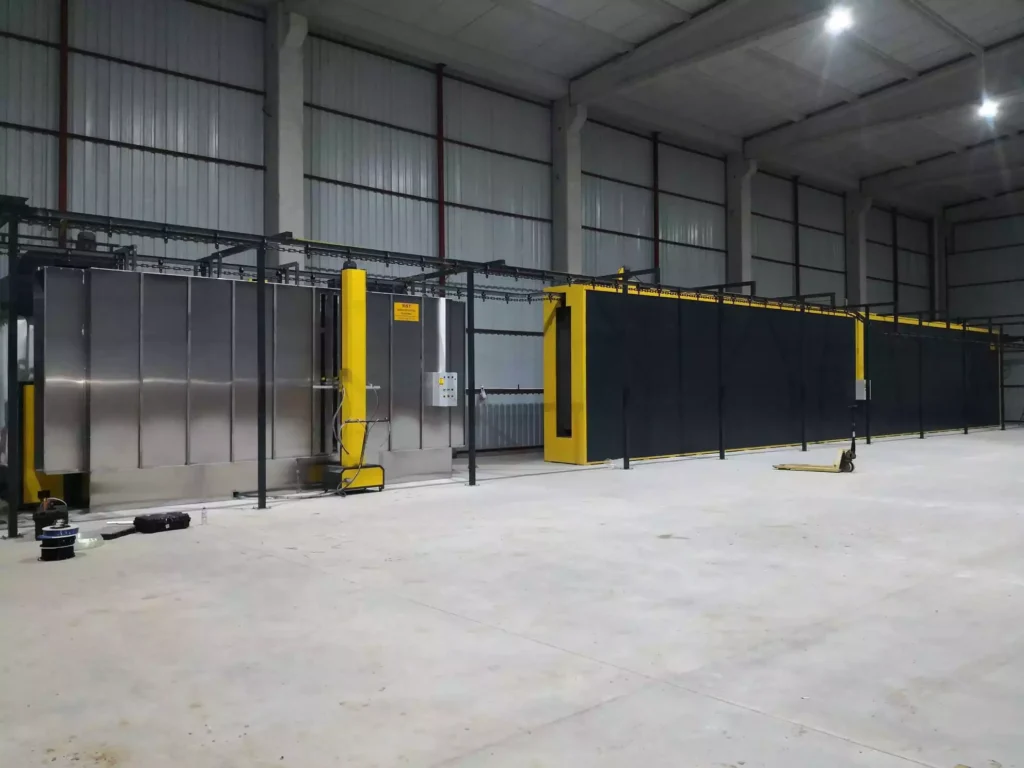
As aluminum finishing plants continue to evolve, there is also a growing focus on innovation in the development of advanced surface treatments and finishing technologies. One notable trend is the rise of nanotechnology in aluminum finishing. Nanocoatings, which involve the application of ultra-thin layers of nanomaterials to the surface of aluminum, offer several advantages over traditional coatings. These nanocoatings can enhance properties such as corrosion resistance, wear resistance, self-cleaning capabilities, and UV protection. The use of nanotechnology in aluminum finishing is expected to lead to the creation of even more durable, high-performance aluminum products that meet the demanding needs of industries like aerospace, electronics, and automotive manufacturing.
Additionally, the use of smart coatings and self-healing materials is gaining traction in the aluminum finishing industry. Smart coatings are designed to respond to environmental stimuli, such as changes in temperature or humidity, by altering their properties. For example, a smart coating may become more resistant to corrosion when exposed to saltwater or other harsh conditions. Self-healing coatings, on the other hand, are designed to repair themselves when damaged, extending the lifespan of aluminum products and reducing maintenance costs. These innovations are particularly useful in industries where equipment is exposed to harsh environments, such as marine, offshore, and industrial applications.
Another exciting development in aluminum finishing is the trend toward increasing automation and digitalization. Industry 4.0, which involves the integration of digital technologies like artificial intelligence (AI), machine learning, and the Internet of Things (IoT), is becoming more prevalent in aluminum finishing plants. These technologies allow for real-time monitoring of production processes, predictive maintenance of equipment, and data-driven decision-making. AI-powered systems can optimize parameters such as coating thickness, curing time, and temperature, ensuring that the finished product meets precise quality standards. IoT sensors embedded in equipment can track performance and alert operators to potential issues before they lead to costly breakdowns. The use of big data analytics is also enabling manufacturers to gain insights into production efficiency, energy consumption, and material waste, helping them optimize operations and reduce costs.
As the aluminum industry becomes increasingly globalized, aluminum finishing plants are also adapting to the challenges of a highly competitive market. One key area of focus is supply chain management. With aluminum being sourced from various regions around the world, plants need to ensure that their raw materials are of consistent quality and delivered in a timely manner. The integration of supply chain management software and automation tools allows for better tracking of material shipments, inventory management, and order fulfillment. This helps to mitigate the risks of supply chain disruptions and ensures that plants can meet customer demands on time.
Moreover, many aluminum finishing plants are adopting lean manufacturing principles to eliminate waste, improve productivity, and reduce costs. Lean methodologies focus on streamlining processes by removing inefficiencies, minimizing downtime, and improving the flow of materials and information. By embracing lean principles, plants can improve their overall performance, shorten lead times, and respond more quickly to changing customer needs.
The regulatory environment is another factor influencing the development of aluminum finishing plants. As governments around the world implement stricter environmental regulations, manufacturers are under increasing pressure to reduce their emissions, waste, and energy consumption. This has led to the adoption of cleaner, more energy-efficient technologies, such as energy recovery systems and low-emission curing ovens. The push for sustainability is also driving the use of alternative, non-toxic chemicals in the finishing processes, as well as the adoption of low-energy or energy-efficient methods of drying and curing coatings. In regions like Europe and North America, where environmental standards are particularly stringent, companies that embrace these green technologies are likely to gain a competitive edge in the marketplace.
The trend toward sustainability also extends to product design and end-of-life management. Aluminum’s inherent recyclability makes it an attractive material for industries seeking to reduce their environmental footprint, and many aluminum finishing plants are playing an active role in promoting circular economy principles. Some plants are collaborating with manufacturers to design products that are easier to recycle at the end of their life cycle, ensuring that aluminum can be recovered and reused without loss of quality. In some cases, plants are implementing take-back programs where they reclaim finished aluminum products for recycling, further reducing waste and conserving natural resources.
The impact of globalization on aluminum finishing plants extends beyond supply chain management. Manufacturers are increasingly required to comply with international standards, both in terms of product quality and environmental performance. This has led to the implementation of certifications such as ISO 14001 for environmental management and ISO 50001 for energy management, which demonstrate a commitment to sustainability and efficient use of resources. Obtaining these certifications not only helps plants meet regulatory requirements but also improves their reputation among customers who value environmental responsibility.
Another important aspect of the aluminum finishing industry is the role of skilled labor. While automation is transforming many aspects of the industry, human expertise remains crucial to ensuring that finishing processes are carried out effectively. Skilled technicians and engineers are needed to operate complex machinery, monitor production processes, troubleshoot issues, and ensure that products meet quality standards. As new technologies emerge, there is also a growing need for specialized training programs to help workers acquire the necessary skills to work with advanced finishing equipment and techniques. Many plants are partnering with educational institutions and technical schools to develop training programs that focus on the specific needs of the aluminum finishing industry.
In conclusion, aluminum finishing plants are at the forefront of developing cutting-edge technologies that improve the functionality, appearance, and sustainability of aluminum products. From innovations in surface treatments and coatings to the integration of automation, digitalization, and lean manufacturing practices, the aluminum finishing industry is continually evolving to meet the demands of a dynamic and global market. As sustainability, performance, and customization continue to drive industry trends, aluminum finishing plants will play a crucial role in shaping the future of manufacturing across a wide range of sectors. The ongoing focus on efficiency, environmental responsibility, and quality will ensure that aluminum remains a vital and highly valued material in the production of products that shape our everyday lives.
Aluminium Powder Coating Lines
As the aluminum finishing industry continues to evolve, the integration of advanced research and development (R&D) into aluminum surface treatments is becoming increasingly important. The demand for high-performance aluminum products across a wide range of industries, from construction and automotive to aerospace and consumer electronics, has led to the continuous exploration of novel finishing techniques. Research efforts are being directed toward improving the efficiency, environmental impact, and performance characteristics of aluminum finishes. This includes developing coatings that offer enhanced scratch resistance, self-cleaning properties, and greater durability under extreme conditions. R&D is also focusing on exploring new materials that can be used in conjunction with aluminum, such as hybrid coatings and composite materials, to create even more resilient finishes.
Nanotechnology, as mentioned previously, is a significant area of research that holds promise for revolutionizing aluminum finishing. One example is the development of nanostructured coatings that can provide superior corrosion resistance. By using nanoparticles, such coatings can offer enhanced protection against environmental factors such as saltwater, industrial pollutants, and UV radiation. These coatings also have the potential to be thinner, lighter, and more cost-effective than traditional coatings, which can contribute to reducing the environmental footprint of aluminum products. Additionally, research is being conducted into self-healing nanocoatings that can repair minor surface damage autonomously, further extending the life of aluminum products and reducing maintenance costs.
Another emerging area of R&D is in the development of smart coatings that can monitor the condition of aluminum surfaces in real time. These coatings can be embedded with sensors that detect changes in temperature, humidity, or exposure to chemicals. Such coatings can trigger specific reactions, such as releasing a protective compound or changing color to indicate damage, thus providing a proactive solution for maintaining the quality and integrity of aluminum products. This is particularly valuable in industries like aerospace and automotive, where safety and performance are paramount.
The trend toward digitalization and Industry 4.0 technologies in aluminum finishing plants is also heavily supported by ongoing research and development. AI and machine learning algorithms are being used to optimize the application of coatings, adjust process parameters, and predict potential issues in real time. For instance, AI models can predict when equipment may require maintenance, reducing unplanned downtime and helping to avoid costly repairs. Furthermore, advanced machine vision systems are being implemented to inspect the quality of aluminum finishes, identifying even the most subtle defects that may be missed by human inspectors. These systems are becoming more sophisticated, enabling quality control at higher speeds and with greater accuracy.
One area where R&D is making significant strides is in the reduction of energy consumption during the finishing process. Finishing operations, especially those that involve curing, anodizing, and coating, can be energy-intensive. Researchers are investigating ways to reduce the energy requirements of these processes through innovations such as low-temperature curing technologies, which reduce the need for high-temperature ovens. Another approach being explored is the use of alternative energy sources, such as solar or wind energy, to power finishing equipment, helping to reduce the carbon footprint of aluminum finishing plants.
The recycling of aluminum scrap and by-products from finishing processes is another area that is seeing increased focus from researchers. The aluminum industry already benefits from a high rate of recycling, but there is a drive to further improve the efficiency of recycling processes. Researchers are exploring new methods to recycle aluminum coatings, especially in the case of composite or multi-layer coatings, which are often difficult to separate during recycling. By developing more efficient methods for recycling these complex materials, plants can contribute to the sustainability of the aluminum industry by further reducing waste and conserving resources.
The increasing global focus on sustainability is also leading to the development of new, environmentally friendly chemicals for aluminum finishing. Many traditional chemicals used in processes like anodizing, etching, and coating can be harmful to the environment, and there is growing pressure to replace them with greener alternatives. The search for non-toxic, water-based chemicals and solvents that can perform as effectively as their traditional counterparts is an active area of research. These alternatives not only reduce the environmental impact of aluminum finishing but also improve the health and safety of workers by minimizing exposure to harmful substances.
Moreover, as regulatory standards for environmental performance become more stringent, aluminum finishing plants must keep pace with these changes to remain compliant. Researchers are continually working to develop finishing processes that use fewer hazardous chemicals, reduce emissions of volatile organic compounds (VOCs), and minimize waste generation. For example, the development of low-VOC or VOC-free paints and coatings is an important step toward achieving compliance with environmental regulations in many regions.
In the automotive sector, the push for lightweight, high-strength materials is driving innovations in aluminum finishing. Research is focusing on ways to improve the durability of aluminum finishes used in car manufacturing, particularly in components that are exposed to harsh environmental conditions, such as wheel rims, body panels, and trim. New types of corrosion-resistant coatings and treatments are being developed to ensure that these aluminum parts maintain their appearance and performance over time, even when exposed to salt, moisture, and high temperatures. In addition, research is being conducted into finishes that can improve the recyclability of aluminum automotive components, contributing to the automotive industry’s shift toward sustainability and circular economy practices.
In the aerospace sector, the need for lightweight materials that can withstand extreme conditions is also driving advancements in aluminum finishing technologies. Aircraft components made of aluminum need to resist not only corrosion but also high-speed wind, pressure, and temperature fluctuations. R&D in this area focuses on developing advanced coatings that provide superior protection against these factors while maintaining the structural integrity of the metal. These coatings must be both lightweight and durable, ensuring the longevity and safety of aircraft components in demanding environments.
The demand for aluminum products in the electronics industry is another factor influencing research in aluminum finishing. Aluminum is increasingly being used in the production of consumer electronics such as smartphones, laptops, and tablets due to its lightweight and aesthetically pleasing appearance. Researchers are exploring new surface treatment techniques that can enhance the tactile and visual qualities of aluminum while providing additional functionalities, such as improved thermal conductivity and scratch resistance. Advanced anodizing methods, which allow for more intricate patterns and textures, are being studied to meet the growing consumer demand for visually distinctive electronic products.
In conclusion, the future of aluminum finishing is shaped by ongoing advancements in research and technology. From innovations in nanotechnology and smart coatings to the integration of AI and machine learning, the industry is continuously evolving to meet the needs of a wide range of sectors. As sustainability becomes increasingly central to global manufacturing, the aluminum finishing industry is committed to adopting greener, more energy-efficient practices that reduce environmental impact. Through continued R&D, aluminum finishing plants will be able to offer even more durable, high-performance, and aesthetically pleasing aluminum products, playing a crucial role in the global supply chain and contributing to the sustainable development of industries across the world.
As the aluminum finishing industry moves forward, an increasing emphasis is being placed on improving the long-term sustainability of both the production processes and the finished products. The concept of the circular economy is gaining traction across various industries, and aluminum, with its ability to be recycled without loss of quality, is at the forefront of this shift. Aluminum finishing plants are integrating more circular practices, not just by recycling aluminum scrap, but by focusing on the entire lifecycle of their products, from sourcing raw materials to managing end-of-life disposal.
One of the ways that aluminum finishing plants are contributing to the circular economy is through closed-loop systems, which minimize waste and ensure that materials are reused efficiently throughout the production cycle. For example, aluminum scraps generated during the finishing process can be collected, cleaned, and reintroduced into the production line without significant loss of material quality. This process reduces the need for virgin aluminum, helping to lower energy consumption and the carbon footprint associated with aluminum production. Additionally, advancements in technology have made it easier to separate and recycle coatings and other by-products from the finishing process, contributing to further material conservation and waste reduction.
Another important aspect of sustainability in aluminum finishing plants is energy management. Energy-intensive processes, such as anodizing and curing, traditionally account for a significant portion of a plant’s operational energy usage. However, as energy efficiency becomes a key driver of cost savings and environmental responsibility, manufacturers are adopting more energy-efficient equipment and processes. The shift to low-energy or energy-saving ovens, LED lighting systems, and heat recovery technologies has proven beneficial in reducing energy consumption while maintaining the quality and speed of production. In some cases, aluminum finishing plants are even utilizing renewable energy sources, such as solar or wind power, to help meet their energy needs, further reducing their dependence on fossil fuels.
In addition to energy and material efficiency, water conservation is becoming a significant focus. The treatment and recycling of water used in cleaning, rinsing, and anodizing processes are becoming more common in modern aluminum finishing plants. Water-based finishing techniques, such as waterborne coatings and water-based anodizing, are replacing solvent-based systems, which not only reduces water consumption but also lowers the environmental impact associated with the use of harmful chemicals. These practices are particularly important in regions where water scarcity is a concern, and they align with broader environmental goals of reducing industrial water use and pollution.
The trend toward environmental sustainability in aluminum finishing is also reflected in the growing demand for green certifications and eco-labels. Manufacturers that commit to environmentally responsible practices are increasingly pursuing certifications such as the LEED (Leadership in Energy and Environmental Design) or ISO 14001, which demonstrate their commitment to minimizing their environmental impact. These certifications not only help companies meet regulatory standards but also provide them with a competitive edge in the market by appealing to environmentally conscious consumers. As sustainability becomes a key differentiator in global markets, these certifications play an important role in fostering customer loyalty and attracting new business opportunities.
Furthermore, as consumer demand for environmentally responsible products increases, manufacturers are facing pressure to deliver more sustainable products at every stage of production. Aluminum finishing plants are responding by developing finishes that are not only longer-lasting but also safer for consumers and the environment. For example, the trend toward reducing the use of hazardous chemicals in coatings and anodizing baths is helping to create a safer and greener end product. Many companies are now developing low-VOC, low-toxic, and even VOC-free coatings that perform just as well as traditional finishes, but with a much smaller environmental footprint. By adopting these greener alternatives, aluminum finishing plants can meet the evolving demands of the market while simultaneously reducing their own environmental impact.
Another important trend in the aluminum finishing industry is the continued expansion of advanced manufacturing practices that enable even greater customization. As consumer preferences shift toward personalized, high-performance products, manufacturers are increasingly looking to meet these demands with a wider variety of finishes, textures, and colors. Customization in aluminum finishes can range from aesthetic alterations, such as brushed or matte textures, to more technical features like enhanced corrosion resistance or thermal insulation properties. With digital technology and advanced coating techniques, aluminum finishing plants can now offer customers a broad range of personalized options, further extending the material’s versatility and appeal in industries like automotive, architecture, and consumer electronics.
In the automotive sector, for instance, aluminum is widely used for lightweight body panels, wheels, and trim components. As automakers continue to focus on improving vehicle fuel efficiency, aluminum finishing plants are developing specialized coatings that help reduce the weight of vehicle parts while improving the finish’s durability and appearance. These finishes are designed to resist environmental wear, including road salt, UV degradation, and extreme temperatures. Moreover, as the automotive industry increasingly shifts toward electric vehicles (EVs), aluminum finishing plants are exploring finishes that contribute to improved energy efficiency and extended vehicle lifespan, such as lightweight coatings and enhanced heat dissipation treatments.
In architecture and construction, aluminum continues to be a preferred material for building facades, window frames, and doors due to its aesthetic appeal, corrosion resistance, and low maintenance requirements. The development of new finishing technologies allows aluminum to be adapted to a variety of architectural styles, from sleek, modern designs to more traditional appearances. In addition to surface finishes, architectural aluminum products are now being developed with enhanced thermal insulation properties, helping buildings achieve higher energy efficiency and reduce heating and cooling costs. With growing interest in energy-efficient buildings, architects and designers are looking to aluminum as a sustainable, high-performance option for their construction projects.
The aerospace industry also remains a significant driver of innovation in aluminum finishing. Aerospace components, particularly those used in commercial and military aircraft, require specialized finishes to meet stringent performance standards. These finishes must be resistant to extreme conditions, including high-pressure environments, exposure to chemicals, and varying temperatures. Advances in coatings and surface treatments are making it possible to develop finishes that not only protect aluminum from wear and corrosion but also enhance the material’s mechanical properties. As the demand for lightweight, durable components increases, particularly for next-generation aircraft and spacecraft, aluminum finishing plants will play a crucial role in meeting these high-performance requirements.
As technology continues to advance and the demand for sustainable, high-performance materials grows, aluminum finishing plants will need to keep pace with these changes by investing in new technologies and refining their processes. The ongoing development of next-generation coatings, nanotechnology, and energy-efficient production methods will likely lead to even more specialized and innovative finishes in the years to come. By embracing these technological advancements, aluminum finishing plants will be well-positioned to support the evolving needs of industries ranging from aerospace and automotive to architecture and consumer goods.
In conclusion, the future of aluminum finishing is set to be shaped by continued innovations in sustainability, advanced manufacturing, and customization. As the demand for environmentally responsible, high-performance aluminum products grows, finishing plants will need to adapt to meet the changing needs of a wide range of industries. By leveraging cutting-edge technologies, focusing on energy and material efficiency, and embracing the principles of the circular economy, aluminum finishing plants will continue to play a vital role in shaping the future of global manufacturing. With a focus on performance, sustainability, and quality, the industry will be well-equipped to meet the challenges of the future while contributing to the creation of environmentally responsible products that support a sustainable, circular economy.
Aluminium Profile Powder Coating Lines
As the aluminum finishing industry progresses, one of the key factors shaping its future will be the ongoing integration of digital technologies, which promise to revolutionize the way aluminum is processed, finished, and managed. The application of digital tools like Internet of Things (IoT) sensors, cloud computing, and advanced data analytics is already having a profound impact on how aluminum finishing plants operate. By embedding sensors in various stages of the production process, operators can continuously monitor critical parameters such as temperature, humidity, and coating thickness, and instantly adjust to maintain the optimal quality of the finish.
Cloud computing and big data analytics enable manufacturers to collect and store vast amounts of production data, providing valuable insights into operational performance. This data can be analyzed to predict potential issues before they arise, optimize production schedules, and improve overall efficiency. For instance, by tracking the performance of finishing equipment in real time, plants can schedule predictive maintenance, reducing downtime and extending the life of machinery. Furthermore, these digital tools allow for greater transparency in the production process, ensuring higher levels of accountability and traceability—critical factors for industries that demand high-quality standards, such as aerospace, automotive, and medical devices.
The rise of Industry 4.0 is also playing a significant role in reshaping the aluminum finishing industry by enabling smarter, more flexible production lines. With the advent of robotic automation and AI, many aluminum finishing plants are increasingly able to achieve higher throughput with reduced labor costs. For example, robotic arms equipped with advanced vision systems can precisely apply coatings or anodize aluminum with consistent accuracy. AI algorithms can also optimize the use of raw materials and resources, minimizing waste and reducing production costs. In some cases, AI is used to automatically adjust process parameters to compensate for material variations, ensuring that the final product always meets stringent quality specifications.
Moreover, the introduction of advanced simulation tools has become integral to the aluminum finishing process. Simulation software enables manufacturers to predict the outcomes of different finishing processes, making it easier to experiment with new materials, coatings, or production techniques before they are implemented on the factory floor. This reduces the time spent on trial and error and helps streamline the introduction of new technologies. For instance, simulations can predict how a new coating will interact with aluminum under various environmental conditions, allowing for better decision-making regarding the selection of materials and coatings for specific applications.
Additionally, advanced software solutions are helping plants streamline the management of their entire supply chain. From sourcing raw aluminum to managing finished products and coordinating with customers, supply chain management systems are becoming more automated and data-driven. These systems provide real-time visibility into inventory levels, production status, and shipping schedules, helping manufacturers optimize their operations, reduce lead times, and improve customer satisfaction. As global supply chains become more complex, having an integrated and automated system in place will be crucial for meeting the demands of a fast-paced market while ensuring cost-effectiveness.
The increasing reliance on digital technologies also aligns with a broader trend toward greater transparency and sustainability in aluminum production. With more detailed data available, manufacturers are now able to track their environmental performance more closely. This includes monitoring energy consumption, water use, and emissions in real time. This data can then be used to identify areas for improvement, helping to achieve sustainability targets and meet regulatory compliance requirements. Many companies are also leveraging digital platforms to provide customers with information about the environmental impact of their products, such as the carbon footprint of aluminum finishes. By sharing this information, aluminum finishing plants can enhance their credibility and appeal to eco-conscious consumers, particularly in markets where environmental concerns are a significant purchasing factor.
Alongside the growth of digital tools, there is also an increasing demand for collaboration within the aluminum finishing industry. As the complexities of the supply chain continue to grow, manufacturers are finding that collaboration with suppliers, customers, and even competitors can yield significant benefits. For example, many plants are partnering with material suppliers and coating manufacturers to develop new, innovative coatings that offer improved performance while also meeting environmental standards. Collaborative R&D efforts are particularly important in the context of aluminum’s evolving role in emerging industries such as electric vehicles (EVs), renewable energy, and sustainable construction. By working together, stakeholders can accelerate the development of new technologies and processes that benefit the entire supply chain.
In the automotive industry, for example, as electric vehicle production ramps up, aluminum finishing plants are playing an important role in developing finishes for lightweight automotive components. These finishes not only need to meet the performance demands of the automotive sector but also align with the sustainability goals of automakers. By partnering with car manufacturers and other suppliers, aluminum finishing plants are developing coatings that enhance the energy efficiency of vehicles while ensuring that the finished products are durable, corrosion-resistant, and visually appealing. As the electric vehicle market grows, there will be a greater focus on aluminum as a lightweight alternative to traditional materials, and the finishing processes will play a key role in ensuring the long-term performance of these components.
In the field of renewable energy, aluminum plays a critical role in the construction of solar panels, wind turbines, and other energy infrastructure. As demand for clean energy grows, so does the need for high-performance aluminum finishes that can withstand harsh environmental conditions, including exposure to extreme temperatures, moisture, and UV radiation. Aluminum finishing plants are increasingly developing specialized coatings and treatments that protect components from corrosion and degradation, ensuring the longevity and reliability of renewable energy systems. Additionally, the growing focus on the sustainability of renewable energy projects is leading manufacturers to seek more energy-efficient and environmentally friendly methods of finishing aluminum components.
The role of aluminum finishing in the construction and architecture industry is also evolving. As more buildings are designed with energy efficiency in mind, aluminum is being used for both structural and aesthetic applications. Finishing techniques that improve the thermal insulation properties of aluminum are becoming increasingly important, particularly for window frames, cladding systems, and roofing materials. Research and development in this area are focused on improving the energy efficiency of aluminum components while maintaining their durability and aesthetic appeal. As architectural designs continue to push the boundaries of creativity, aluminum’s ability to offer diverse finishes and customized colors allows for greater design flexibility.
Looking ahead, the aluminum finishing industry is poised to continue its rapid transformation as new technologies and customer demands reshape the market. From the continued integration of digital tools and automation to advancements in sustainability and material science, aluminum finishing plants will play an essential role in meeting the needs of industries ranging from aerospace and automotive to architecture and renewable energy. As manufacturers look to develop more efficient, durable, and environmentally friendly products, the aluminum finishing sector will remain at the forefront of innovation, ensuring that aluminum remains a versatile and highly valued material in the global marketplace.
In conclusion, the aluminum finishing industry is entering an exciting era characterized by technological innovation, increased focus on sustainability, and greater collaboration across sectors. The integration of digital tools, automation, and advanced manufacturing processes will continue to shape the industry, driving improvements in efficiency, quality, and environmental performance. With an ever-growing emphasis on sustainability and circular economy principles, the aluminum finishing industry is not only meeting the challenges of today but also positioning itself for future growth and success in a rapidly changing global economy. By embracing innovation and adapting to evolving customer demands, aluminum finishing plants will remain a crucial part of the manufacturing ecosystem, contributing to the development of high-performance, sustainable products that support a wide range of industries.
As the aluminum finishing industry continues to evolve, another key focus will be the increased adoption of advanced materials science and the exploration of hybrid and multi-functional coatings. The materials used in aluminum finishing processes are rapidly improving, with a growing emphasis on coatings that not only enhance the appearance of aluminum but also provide additional protective and functional properties. For example, hybrid coatings that combine both organic and inorganic materials are gaining attention for their ability to offer superior durability, corrosion resistance, and scratch resistance, all while maintaining a low environmental impact. These hybrid coatings can also be engineered to incorporate specific functionalities, such as self-healing properties, enhanced adhesion to substrates, or even antimicrobial effects, which is especially relevant in industries such as healthcare, food processing, and transportation.
Further research is also being conducted into the development of advanced anodizing technologies. Anodizing, a process that thickens the natural oxide layer on aluminum, improves its corrosion resistance, wear resistance, and aesthetic appearance. New anodizing techniques are being explored to create finishes that are not only more durable but also more energy-efficient. Traditional anodizing processes often require large amounts of electricity, and researchers are working on methods to reduce the energy consumption involved. Furthermore, innovative anodizing solutions are being tested to allow for a broader range of colors and finishes, adding even more design flexibility to aluminum products while maintaining environmental responsibility.
Another major trend shaping the future of aluminum finishing is the increasing focus on the compatibility of aluminum finishes with other materials in multi-material structures. Aluminum is often used in combination with steel, plastic, or glass in various industries, and the demand for finishes that bond effectively with other materials is growing. In automotive and construction sectors, for example, components made from different materials must often be treated with coatings that promote adhesion, resist corrosion, and perform well in demanding environments. The development of coatings and finishes that enhance the bonding between aluminum and other materials is therefore an important area of research. This not only ensures the longevity and durability of composite structures but also opens the door to new applications for aluminum in mixed-material designs.
Another evolving aspect of aluminum finishing is the increasing focus on “smart” and interactive finishes. The demand for “smart” materials—those that can respond to external stimuli—has been growing, and aluminum finishes are no exception. Smart coatings, which can change properties in response to light, temperature, or chemical exposure, are becoming increasingly relevant. For example, photochromic coatings that change color in response to UV light are being used in consumer electronics, automotive applications, and architectural design. Thermochromic coatings, which change color with temperature changes, are being explored for applications in everything from automotive components to home appliances, providing a functional and visually appealing finish.
Another area of advancement is in the development of coatings that enable greater functionality beyond traditional protective finishes. For example, self-cleaning coatings are gaining traction, particularly in architectural and automotive applications. These coatings use the principles of hydrophobicity or photocatalysis to keep surfaces clean, resisting dirt, water, and pollutants. In architecture, self-cleaning aluminum finishes can help maintain the aesthetic quality of building facades while reducing maintenance costs. In automotive applications, self-cleaning finishes can help maintain the appearance of exterior surfaces, improving the overall quality and longevity of vehicles.
In addition to functional coatings, there is a growing interest in finishes that offer enhanced surface texture. Surface texture plays a crucial role in both the appearance and performance of aluminum products, and advancements in this area are opening up new design possibilities. For example, embossed, patterned, or matte finishes are increasingly being used to create distinct visual effects on aluminum components, particularly in industries like architecture and consumer electronics. Additionally, textured finishes can offer enhanced slip resistance and improve grip on components like handrails, elevator panels, or appliance exteriors.
As customer demands for highly specialized and customized aluminum products continue to rise, finishing techniques will need to become more flexible and adaptable. For example, precision finishing technologies are enabling manufacturers to create more intricate patterns and designs on aluminum surfaces with a high level of precision. Laser engraving and laser etching, which allow for detailed, permanent markings, are gaining popularity in industries that require detailed branding, identification, or aesthetic touches on aluminum products. This is particularly useful in high-end consumer electronics, luxury goods, and custom automotive parts.
With the global shift toward electrification in various industries, particularly the automotive sector, the demand for lightweight materials is accelerating. Aluminum, due to its high strength-to-weight ratio, is increasingly being used in electric vehicle (EV) production, and the need for specialized finishes to protect and enhance these parts is becoming more critical. In addition to providing corrosion resistance and improving the vehicle’s appearance, these finishes must also meet the specific performance requirements of EVs, including heat management and protection from electromagnetic interference (EMI). Aluminum finishes that contribute to better heat dissipation, longer battery life, and overall energy efficiency are in high demand. Additionally, coatings that improve the aerodynamics of EV components, such as underbody panels and wheels, are also being developed, with the goal of enhancing vehicle range and efficiency.
In the construction sector, aluminum is also being used in the growing trend toward green building and sustainable construction practices. The use of aluminum in building facades, window frames, and roofing systems is increasing, driven by the material’s lightweight, durable, and corrosion-resistant properties. Specialized finishes that enhance the thermal insulation and energy efficiency of aluminum components are becoming an important aspect of sustainable architecture. For example, reflective coatings are being applied to aluminum used in solar shading systems to reduce the amount of heat absorbed by buildings, improving energy efficiency and reducing cooling costs.
Another area of focus for the aluminum finishing industry is the expansion of lightweight composites and hybrid materials that combine aluminum with other advanced materials. These materials are being used to reduce weight without sacrificing strength, an essential factor for industries like aerospace, automotive, and electronics. The finishing processes for these advanced materials require specialized techniques that ensure the aluminum components are treated in a way that maximizes performance and compatibility with other materials. As demand for lightweight, high-strength components increases, so too does the need for advanced finishing technologies that can cater to these complex materials.
Looking further into the future, there is also a potential for aluminum finishing processes to play a role in the growing field of 3D printing, also known as additive manufacturing. Aluminum alloys are increasingly being used in 3D printing for applications in industries like aerospace, automotive, and healthcare. Post-processing, which includes finishing and surface treatment, will be a critical step in ensuring that 3D-printed aluminum components achieve the desired material properties, aesthetics, and performance. Developing new finishing techniques that can be applied to 3D-printed aluminum parts will be essential for the widespread adoption of additive manufacturing technologies in industries that require high-performance materials.
As we continue to push the boundaries of materials science and manufacturing technologies, the future of aluminum finishing will be defined by a combination of innovation, sustainability, and customization. The industry will continue to evolve as it responds to emerging trends, from the growing demand for environmentally responsible manufacturing to the need for smarter, more functional coatings. By embracing new technologies, expanding capabilities, and meeting the ever-evolving demands of customers, aluminum finishing plants will remain a central part of the global manufacturing landscape, providing essential products for industries ranging from automotive and aerospace to construction, renewable energy, and consumer electronics.
In summary, the aluminum finishing industry stands at the threshold of exciting advancements. With growing demand for sustainable practices, innovative coatings, and smarter, more functional finishes, the industry is embracing new technologies and refining its processes to meet the challenges of the future. From the rise of smart coatings and hybrid materials to the integration of digital tools and automation, aluminum finishing plants will continue to be at the forefront of innovation, ensuring the long-term success and sustainability of this vital industry.
Not only do we manufacture our powder coating equipment, we also ship them worldwide to your facility with care
We’re not just the manufacturers of your powder coating equipment, we’re also your worldwide delivery partners.
At EMS Powder Coating Equipment, we understand that getting your powder coating equipment to you quickly and safely is just as important as manufacturing it to the highest standards. That’s why we offer worldwide delivery services to all of our customers.
We work with a network of experienced and reliable shipping partners to ensure that your equipment arrives on time and in perfect condition. We also offer a variety of shipping options to fit your budget and needs.
Whether you need your equipment shipped to a local address or to an international destination, we can help. We’ll work with you to choose the best shipping option for your needs and to keep you updated on the status of your shipment every step of the way.
So when you choose EMS for your powder coating equipment, you’re not just getting the best products on the market, you’re also getting the best possible delivery experience.
Contact us today to learn more about our worldwide delivery services.
